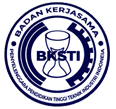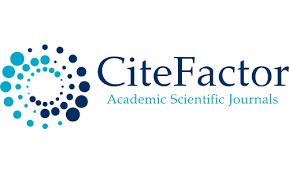Optimizing the Distribution and Allocation of COVID-19 Vaccines Using Mathematical Programming Approach: A Case Study in Indonesia
Abstract
Keywords
Full Text:
PDFReferences
Abbasi, B., Fadaki, M., Kokshagina, O., Saeed, N., & Chhetri, P. (2020). Modeling vaccine allocations in the COVID-19 pandemic: A case study in Australia. SSRN Electronic Journal, 1-34. https://doi.org/10.2139/SSRN.3744520
Abila, D. B., Dei-Tumi, S. D., Humura, F., & Aja, G. N. (2020). We need to start thinking about promoting the demand, uptake, and equitable distribution of COVID-19 vaccines now!. Public Health in Practice, 1, 100063. https://doi.org/10.1016/j.puhip.2020.100063
Alam, S. T., Ahmed, S., Ali, S. M., Sarker, S., Kabir, G., & Ul-Islam, A. (2021). Challenges to COVID-19 vaccine supply chain: Implications for sustainable development goals. International Journal of Production Economics, 239, 108193. https://doi.org/10.1016/J.IJPE.2021.108193
Alizadeh, M., Paydar, M. M., Hosseini, S. M., & Makui, A. (2021). Influenza vaccine supply chain network design during the COVID-19 pandemic considering dynamical demand. Scientia Iranica, 1-31. https://doi.org/10.24200/SCI.2021.58365.5694
Ariyarajah, A., Berry, I., Haldane, V., Loutet, M., Salamanca-Buentello, F., & Upshur, R. E. G. (2022). Identifying priority challenges and solutions for COVID-19 vaccine delivery in low- and middle-income countries: A modified Delphi study. PLOS Global Public Health, 2(9), e0000844. https://doi.org/10.1371/journal.pgph.0000844
Bertsimas, D., Digalakis, V., Jacquillat, A., Li, M. L., & Previero, A. (2022). Where to locate COVID-19 mass vaccination facilities? Naval Research Logistics, 69(2), 179–200. https://doi.org/10.1002/NAV.22007
Bluth, M. H., Apostolopoulos, V., Ksi, R., A˙ Zek., Kapłan, R., Gdowska, K., & Łebkowski, P. (2022). Vaccination schedule under conditions of limited vaccine production rate. Vaccines, 10(1), 116. https://doi.org/10.3390/VACCINES10010116
Bravo, F., Hu, J., & Long, E. (2022). Optimal COVID-19 vaccination facility location. SSRN Electronic Journal. 1-30. https://doi.org/10.2139/SSRN.4008669
Davahli, M. R., Karwowski, W., & Fiok, K. (2021). Optimizing COVID-19 vaccine distribution across the United States using deterministic and stochastic recurrent neural networks. PLoS ONE, 16. https://doi.org/10.1371/journal.pone.0253925
de Boeck, K., Decouttere, C., & Vandaele, N. (2019). Vaccine distribution chains in low- and middle-income countries: A literature review. Omega, 97, 102097. https://doi.org/10.1016/j.omega.2019.08.004
Deroo S, Pudalov N. J., & Fu LY. (2020). Planning for a COVID-19 vaccination program. JAMA, 323(24): 2458–2459. https://doi.org/10.1001/JAMA.2020.8711
East Kalimantan Provincial Department of Population, Women’s Empowerment, and Child Protection. (2017, February 1). Data Agregat Kependudukan. Retrieved December 1, 2022, from https://dkp3a.kaltimprov.go.id/e-infoduk/
Duijzer, L. E., van Jaarsveld, W., & Dekker, R. (2018). Literature review: The vaccine supply chain. European Journal of Operational Research, 268(1), 174–192. https://doi.org/10.1016/J.EJOR.2018.01.015
Enayati, S., & Özaltın, O. Y. (2020). Optimal influenza vaccine distribution with equity. European Journal of Operational Research, 283(2), 714–725. https://doi.org/10.1016/J.EJOR.2019.11.025
Georgiadis, G. P., & Georgiadis, M. C. (2021). Optimal planning of the COVID-19 vaccine supply chain. Vaccine, 39(37), 5302–5312. https://doi.org/10.1016/J.VACCINE.2021.07.068
Golan, M. S., Trump, B. D., Cegan, J. C., & Linkov, I. (2021). The vaccine supply chain: A call for resilience analytics to support COVID-19 vaccine production and distribution. Systemic Risk and Resilience: Risk, Systems and Decisions, 389–437. https://doi.org/10.1007/978-3-030-71587-8_22
Jahani, H., Chaleshtori, A. E., Khaksar, S. M. S., Aghaie, A., & Sheu, J.-B. (2022). COVID-19 vaccine distribution planning using a congested queuing system—A real case from Australia. Transportation Research Part E: Logistics and Transportation Review, 163, 102749. https://doi.org/10.1016/J.TRE.2022.102749
Kementerian Kesehatan Republik Indonesia. (2022). Profil Direktorat Jenderal Pencegahan dan Pengendalian Penyakit Tahun 2021. Kementerian Kesehatan Republik Indonesia. Accessed October 20, 2024, from https://p2p.kemkes.go.id
Kim, S., & Jung, E. (2019). Prioritization of vaccine strategy using an age-dependent mathematical model for 2009 A/H1N1 influenza in the Republic of Korea. Journal of Theoretical Biology, 479, 97–105. https://doi.org/10.1016/J.JTBI.2019.07.011
Leithäuser, N., Schneider, J., Johann, S., Krumke, S. O., Schmidt, E., Streicher, M., & Scholz, S. (2021). Quantifying COVID-19 vaccine location strategies for Germany. BMC Health Services Research, 21(1), 1–18. https://doi.org/10.1186/S12913-021-06587-X/FIGURES/12
Li, X., Pan, Y., Jiang, S., Huang, Q., Chen, Z., Zhang, M., & Zhang, Z. (2021). Locate vaccination stations considering travel distance, operational cost, and work schedule. Omega, 101. https://doi.org/10.1016/j.omega.2020.102236
Lim, J., Norman, B. A., & Rajgopal, J. (2019). Redesign of vaccine distribution networks. International Transactions in Operational Research, 29(1), 200–225. https://doi.org/10.1111/ITOR.12758
Ma, Q., Liu, Y.-Y., & Olshevsky, A. (2021). Optimal vaccine allocation for pandemic stabilization. arXiv. https://doi.org/10.48550/arxiv.2109.04612
Marie, J., Minoza, A., Bongolan, V. P., & Rayo, J. F. (2021). COVID-19 agent-based model with multi-objective optimization for vaccine distribution. arXiv. https://doi.org/10.48550/arxiv.2101.11400
Matrajt, L., Eaton, J., Leung, T., & Brown, E. R. (2020). Vaccine optimization for COVID-19: Who to vaccinate first? MedRxiv. https://doi.org/10.1101/2020.08.14.20175257
Ng, C. T., Cheng, T. C. E., Tsadikovich, D., Levner, E., Elalouf, A., & Hovav, S. (2018). A multi-criterion approach to optimal vaccination planning: Method and solution. Computers & Industrial Engineering, 126, 637–649. https://doi.org/10.1016/J.CIE.2018.10.018
Ocampo, L., & Yamagishi, K. (2020). Modeling the lockdown relaxation protocols of the Philippine government in response to the COVID-19 pandemic: An intuitionistic fuzzy DEMATEL analysis. Socio-Economic Planning Sciences, 72. https://doi.org/10.1016/J.SEPS.2020.100911
Rastegar, M., Tavana, M., Meraj, A., & Mina, H. (2021). An inventory-location optimization model for equitable influenza vaccine distribution in developing countries during the COVID-19 pandemic. Vaccine, 39(3), 495–504. https://doi.org/10.1016/J.VACCINE.2020.12.022
Shim, E. (2021). Optimal allocation of the limited COVID-19 vaccine supply in South Korea. Journal of Clinical Medicine, 10(4), 591. https://doi.org/10.3390/JCM10040591
Shiri, M., & Ahmadizar, F. (2022). An equitable and accessible vaccine supply chain network in the epidemic outbreak of COVID-19 under uncertainty. Journal of Ambient Intelligence and Humanized Computing, 1–25. https://doi.org/10.1007/s12652-022-03865-2
Soria-Arguello, I., Torres-Escobar, R., Pérez-Vicente, H. A., & Perea-Rivera, T. G. (2021). A proposal mathematical model for the vaccine COVID-19 distribution network: A case study in Mexico. Mathematical Problems in Engineering, 1-11. https://doi.org/10.1155/2021/5484101
Sripada, S., Jain, A., Ramamoorthy, P., & Ramamohan, V. (2021). A decision support framework for optimal vaccine distribution across a multi-tier cold chain network. arXiv. https://doi.org/10.48550/arxiv.2109.04204
Su, Z., McDonnell, D., Cheshmehzangi, A., Li, X., Maestro, D., Šegalo, S., Ahmad, J., & Hao, X. (2021). With great hopes come great expectations: Access and adoption issues associated with COVID-19 vaccines. JMIR Public Health Surveill, 7(8), e26111. https://doi.org/10.2196/26111
Tang, L., Li, Y., Bai, D., Liu, T., & Coelho, L. C. (2022). Bi-objective optimization for a multi-period COVID-19 vaccination planning problem. Omega, 110, 102617. https://doi.org/10.1016/J.OMEGA.2022.102617
Wen, Z., Yue, T., Chen, W., Jiang, G., & Hu, B. (2023). Optimizing COVID-19 vaccine allocation considering the target population. Frontiers in Public Health, 10, 1015133. https://doi.org/10.3389/fpubh.2022.1015133
World Health Organization. (2020, March 8). WHO coronavirus (COVID-19) dashboard with vaccination data. Retrieved December 1, 2022, from https://covid19.who.int/table
Yang, Y., Bidkhori, H., & Rajgopal, J. (2021). Optimizing vaccine distribution networks in low and middle-income countries. Omega, 99, 102197. https://doi.org/10.1016/J.OMEGA.2020.102197
Yang, Y., & Rajgopal, J. (2020). An iterative cyclic algorithm for designing vaccine distribution networks in low- and middle-income countries, Proceedings of the 2019 25th International Joint Conference on Industrial Engineering and Operations Management (IJCIEOM 2019). https://doi.org/10.1007/978-3-030-43616-2_54
DOI: http://dx.doi.org/10.22441/ijiem.v6i1.28013
Refbacks
- There are currently no refbacks.

This work is licensed under a Creative Commons Attribution-NonCommercial 4.0 International License.
IJIEM - Indonesian Journal of Industrial Engineering & Management
Program Pascasarjana Magister Teknik Industri Universitas Mercu Buana
Kampus Menteng - Gedung Tedja Buana, Floor 4th
Jl. Menteng Raya No. 29 Jakarta Pusat- Indonesia
Tlp.: +62 21 31935454 Fax: +62 21 31934474
http://publikasi.mercubuana.ac.id/index.php/ijiem
Email: [email protected]

This work is licensed under a Creative Commons Attribution-NonCommercial 4.0 International License.
The journal is indexed by:






1.png)
.png)
.png)
.png)







